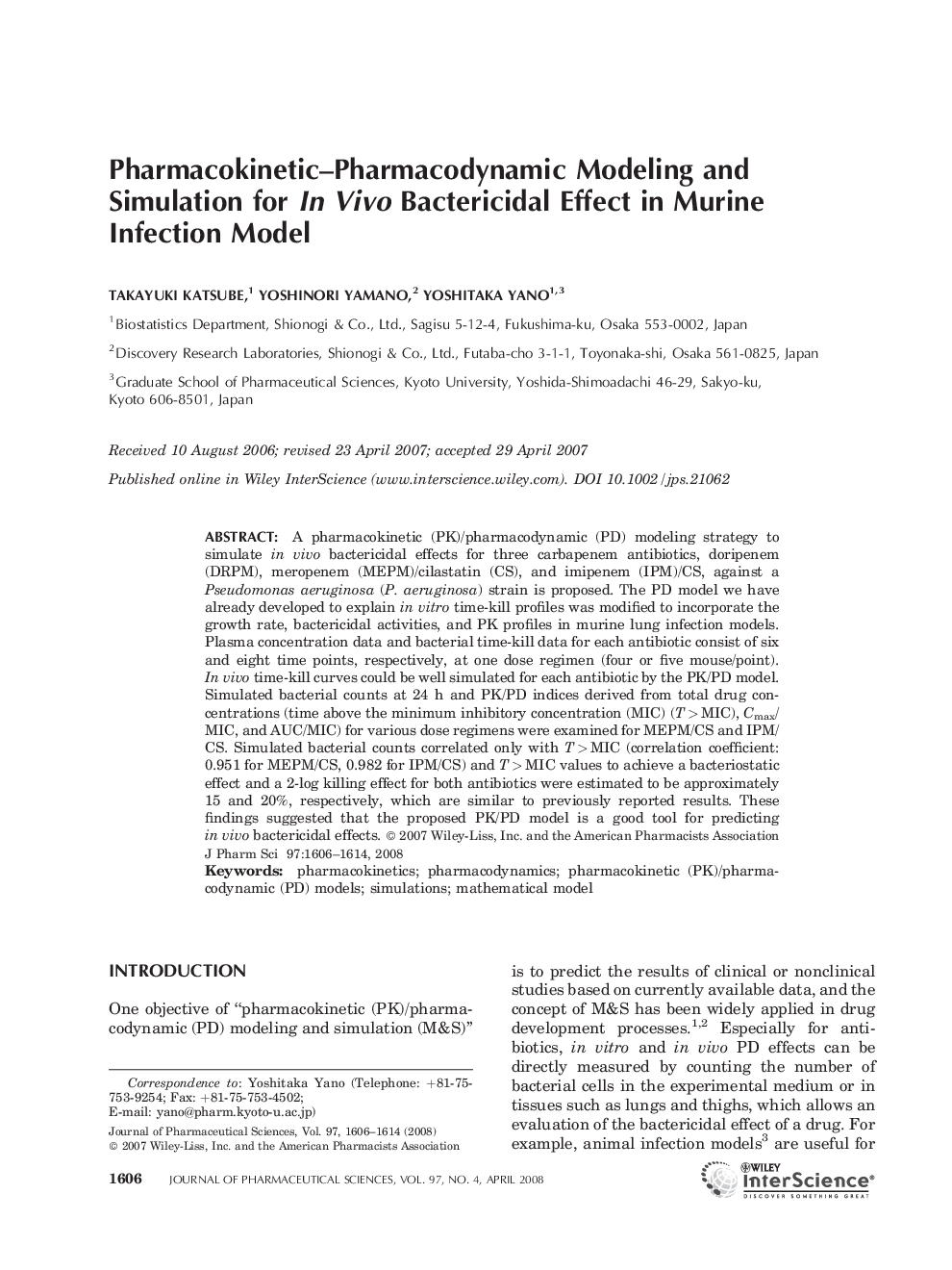| Article ID | Journal | Published Year | Pages | File Type |
|---|---|---|---|---|
| 2487507 | Journal of Pharmaceutical Sciences | 2008 | 9 Pages |
Abstract
A pharmacokinetic (PK)/pharmacodynamic (PD) modeling strategy to simulate in vivo bactericidal effects for three carbapenem antibiotics, doripenem (DRPM), meropenem (MEPM)/cilastatin (CS), and imipenem (IPM)/CS, against a Pseudomonas aeruginosa (P. aeruginosa) strain is proposed. The PD model we have already developed to explain in vitro timeâkill profiles was modified to incorporate the growth rate, bactericidal activities, and PK profiles in murine lung infection models. Plasma concentration data and bacterial timeâkill data for each antibiotic consist of six and eight time points, respectively, at one dose regimen (four or five mouse/point). In vivo timeâkill curves could be well simulated for each antibiotic by the PK/PD model. Simulated bacterial counts at 24 h and PK/PD indices derived from total drug concentrations (time above the minimum inhibitory concentration (MIC) (Tâ>âMIC), Cmax/MIC, and AUC/MIC) for various dose regimens were examined for MEPM/CS and IPM/CS. Simulated bacterial counts correlated only with Tâ>âMIC (correlation coefficient: 0.951 for MEPM/CS, 0.982 for IPM/CS) and Tâ>âMIC values to achieve a bacteriostatic effect and a 2âlog killing effect for both antibiotics were estimated to be approximately 15 and 20%, respectively, which are similar to previously reported results. These findings suggested that the proposed PK/PD model is a good tool for predicting in vivo bactericidal effects. © 2007 WileyâLiss, Inc. and the American Pharmacists Association J Pharm Sci 97:1606-1614, 2008
Related Topics
Health Sciences
Pharmacology, Toxicology and Pharmaceutical Science
Drug Discovery
Authors
Takayuki Katsube, Yoshinori Yamano, Yoshitaka Yano,
